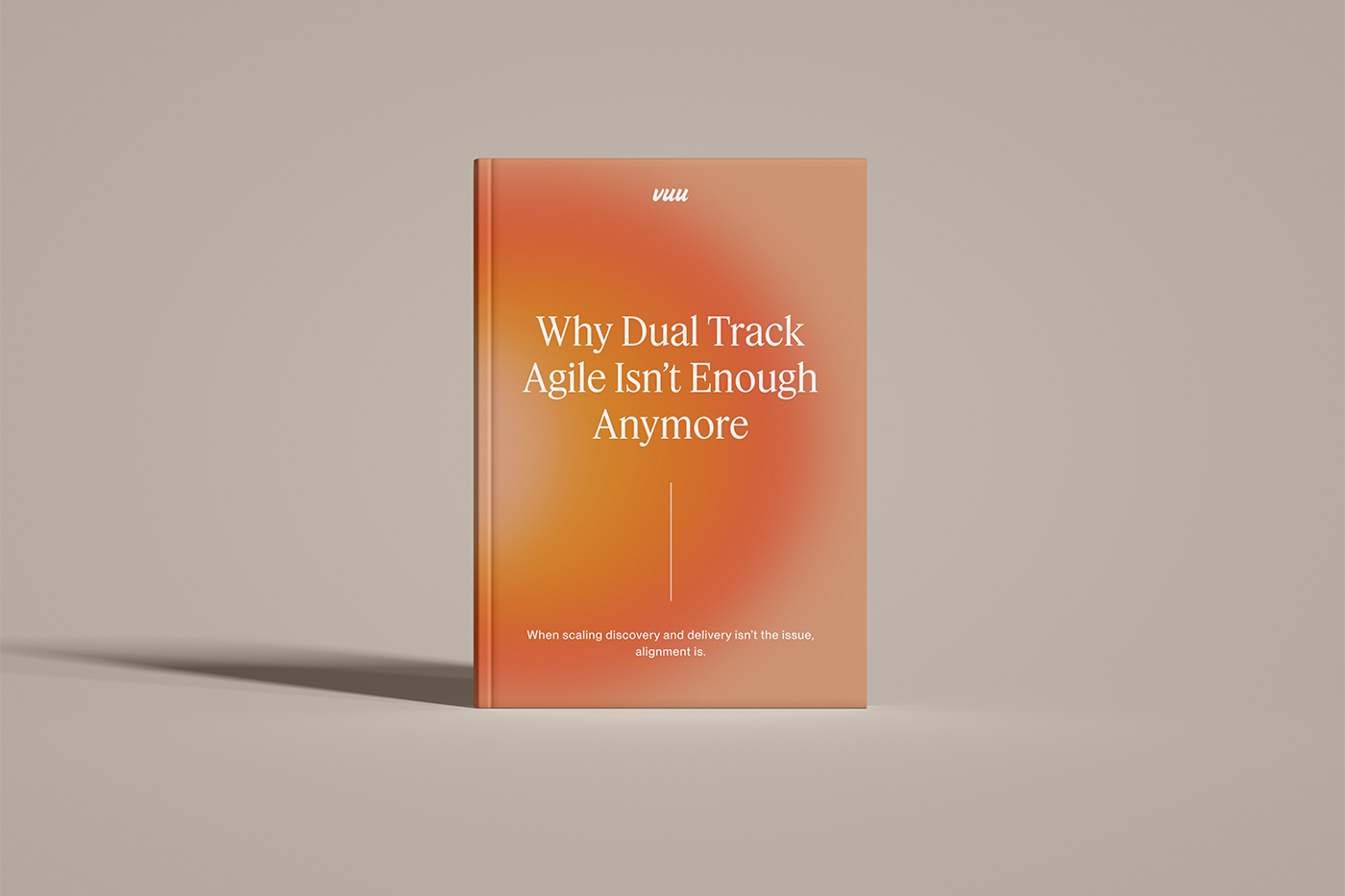When scaling discovery and delivery isn’t the issue, alignment is.
Most organisations still have a single focus: delivery.
Quarterly roadmaps are filled with features to ship, metrics to move, and promises to keep. But behind those outputs sits a quieter, less visible truth, the work that has to happen before anything is ready for delivery.
That gap is what led many teams to adopt dual track agile, adding a discovery stream alongside delivery to ensure the right things are being built. It’s a great step forward. But when scaled across multiple teams and initiatives, it starts to show its cracks.
Parallel discovery work can become fragmented. Teams chase clarity in isolation. The cost isn’t just rework; it’s misalignment, duplication, and fatigue.
I’ve seen this unfold first hand in large, complex programs where multiple teams were exploring upwards of twelve initiatives at once. Everyone was moving fast, but not necessarily together.
When dual track stopped being enough
In those early increments, each team was doing its best to move discovery and delivery forward in parallel. But soon, something familiar emerged: designers weren’t sure which screens or flows they owned.
Several teams ended up designing their own versions of the same core experience, each focusing on different parts of the workflow. One explored how to update information, another how to capture new inputs, another how to manage related tasks. Without shared ownership of the overall experience, the work began to fragment and lose coherence.
It wasn’t about capability; it was about direction. Without an established “North Star” for that key screen, each team had a different interpretation of what “good” looked like. Everyone was waiting for someone else to decide where the shared boundaries were.
Over time, velocity slowed. Discovery dragged as teams second-guessed whether they were stepping into another group’s domain. Overflow from one increment spilled into the next. Designers felt torn between going broad enough to explore and narrow enough to finish.
Dual track wasn’t the issue. Scale was.
The moment to reset
Eventually, leadership made a call: pause the noise and create focus.
A small cross-functional squad was temporarily sponsored, a designer supported by product and architecture leads, to spend three weeks doing nothing but strategic discovery on one key area.
Their goal wasn’t to make pixel-perfect screens. It was to explore the foundations: competitor analysis, the top 90 percent of use cases, system feasibility spikes, and cross-team dependencies. They connected with SMEs, mapped pain points, and validated desirability before committing to any one direction.
That three-week sprint changed everything.
When the teams reconvened, there was suddenly a shared reference point, a guiding concept that gave context to everyone’s work.
Discovery had a longer runway from day one. Teams were sketching flows in the first week instead of debating ownership. And for the first time, everyone could see how their work fitted into the larger picture.
The birth of a third track
That experience gave rise to what we now call the Strategy Track, sometimes referred to as an innovation or intent track.
It sits above and alongside discovery and delivery, focusing on direction setting before the detailed exploration begins. Its purpose isn’t to define final designs or dictate scope. It’s to establish clarity of intent, the “why” and the “where to play” before we get to the “what” and “how.”
This track frames opportunities using OKRs and clear business or customer outcomes. It highlights pain points that are worth solving, challenges assumptions, and sets the compass for discovery teams to explore within.
When done well, it doesn’t slow things down; it removes friction later. Think of it as the map you draw before multiple teams set sail. Without it, everyone is rowing hard, just in slightly different directions.
Why alignment beats acceleration
Adding a third track isn’t about creating another layer of process. It’s about designing a rhythm between tracks.
- Strategy defines direction.
- Discovery tests direction.
- Delivery brings it to life.
The danger of multiple tracks isn’t bureaucracy; it’s context switching. One team juggling all three will burn out quickly. Each track needs its own cadence, rituals, and ownership, supported by leaders who coordinate transitions and guard against drift.
In practice, the strategy track works best in large or evolving ecosystems, places where multiple initiatives share overlapping domains or design systems, but the guardrails aren’t yet fully set. It gives teams the freedom to explore, with just enough boundaries to keep their work connected.
For smaller startups or single-team products, this can scale down. The same mindset can live within one person, a designer or product lead who thinks strategically before diving into solutions. The principle holds: clarity before craft.
Finding clarity in the fog
Introducing a strategy track isn’t a silver bullet. It takes maturity, discipline, and coordination between product, design, and engineering leads.
But when done well, it transforms chaos into coherence. Teams stop working in isolation and start building on each other’s insight. Discovery gains purpose. Delivery gains confidence. And strategy stops being an abstract presentation; it becomes a living guide for how teams make decisions.
It’s not about perfection. It’s about intent. Because in complex systems, clarity is the new speed. And sometimes, the fastest way forward is to pause long enough to decide where you’re really going.
Closing reflection
The strategy track doesn’t replace discovery or delivery; it enables them. It helps organisations move from being output driven to outcome aligned.
Some teams might never need it; their scope is narrow, their path is clear. But for large-scale programs, where overlapping initiatives and shared platforms create invisible friction, a third track can make the difference between motion and progress.
After all, building faster is easy.
Building together, that’s the real work.



